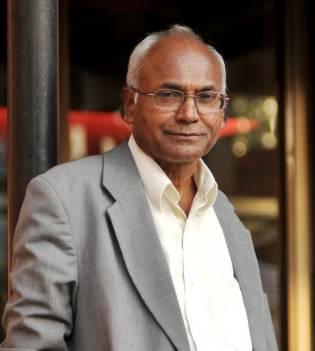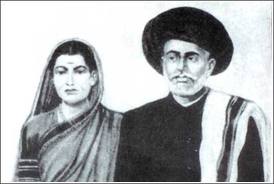Kancha Ilaiah
 ‘You labelled the SC/ST/OBCs as corrupt to equalise them with upper castes who are not merely corrupt but also exploit ‘
‘You labelled the SC/ST/OBCs as corrupt to equalise them with upper castes who are not merely corrupt but also exploit ‘
Dear Ashis Nandy,
On the question of corruption — how to deploy that concept, and which section of the Indian society (not of the state) deserves to be deployed — it seems you displayed a deep diabolism at the Jaipur Literature Festival. With your statement the debate on corruption shifted from individuals to communities/castes. This is in a way good.
The recent countrywide debate on corruption was confined to individuals, most of them coming from the higher echelons of the Indian civil society and state. Now you have, however, labelled the OBCs, SCs and STs as communities that are most corrupt without saying anything about the corruption of the upper castes, except a cursory reference to upper-caste nepotism. In any case, none of the upper-caste intellectuals in the realm of social science have accepted, so far, that the upper castes are corrupt as a community. Your presumption on that count is also wrong. In fact, there is no debate on castes and communities in relation to corruption.
Using a concept like corruption, which is a hated concept in the public realm, for castes and communities of India that produced all our wealth for centuries but never got anything back is dangerous. The British colonists labelled the tribes as “criminal” but the upper castes as “pundits, Deshmukhs, Sir Desais, Deshpandes” and so on. You seem to have followed them in labelling the most oppressed communities as “most corrupt”. Is it not dangerous to do so while claiming to be their supporter? Does not this harm even the social science discourse? This is a time when some amount of intellectual intercourse is taking place between the upper-caste subaltern scholars, who denied the existence of caste, and Dalit-Bahujan scholars, who harp upon only caste.
What would happen to a white intellectual who says that “most black Americans are becoming corrupt” without stating that all whites are racist?
What if someone were to say that “most women who are entering the state administration are corrupt and that women labourers are becoming increasingly corrupt,” (just like the tribals who figured in your statement) — would that be acceptable to women activists of India? Would women intellectuals support it?
Take, for example, the very Bengal experiment that you cited. If I use your own analogy, the Bengal OBC/SC/STs are not corrupt because they have not yet come into the state sector. In other words, the Bengali Bhadralok were/are one of the most corrupt communities of India who pretend to have kept their system “clean”. If I presume that you are using the notion of corruption to the Bengali Bhadralok as a community (made up of three castes: Brahmins, Kayastas and Vaidyas), would they tolerate it? How much intellectual energy has gone into exposing the Bengal Bhadralok manoeuvring? Did they not misuse the law of the land to keep the SC/ST/OBCs out of the educational system?
If we invoke Tarun Tejpal’s epithet that “corruption is an equaliser” then Bengal communists who ruled that state for 37 years must be treated as the worst corrupt group in the world. They subverted the reservation ideology to ensure that the SC/ST/OBCs do not come anywhere near their Bhadralok Brahminic state. What did the Bengal intellectuals do to fight that corrupt Bhadralok community? The course has not changed during the Mamata Banerjee regime too. What will you do now?
When the Ambedkarites were almost ready to deploy caste in the Indian intellectual discourse, undercutting the class and nation discourse, some of our upper-caste scholars came out with a soft, unidentifiable, Western concept called “subaltern”. For those of us who realised that there was a deep notion of casteism operating in the whole nationalist and class movements, we also knew that the deployment of the category “subaltern” subverted our agenda. Somehow, the Mandal movement, with the support of V.P. Singh, began to acquire a foothold in the academic circles. There is a feeling that only to divert the discourse on corruption of upper castes you labelled the SC/ST/OBCs as corrupt by misusing a platform like the Jaipur Literary Festival. Otherwise how should one understand your theory of corruption that walked on its head?
As the British had done earlier, criminality is now being attributed to the victims of criminals themselves. This is one of the main attributes of colonial intellectualism and it now is seeping into upper-caste intellectual discourse. The tragedy is that such friendly surrogation of casteism was sought to be played out at a place where the women from Jaipur’s Maharaja family were selling tea, whereas the maharajas were hardly around. This shows that there is a change. But the change is more visible among upper-caste women and not so much among upper-caste men.
Yes, the Dalit-Bahujan movements should keep track of such surrogations without losing sight of who is a friend and who is a foe. It should draw lines carefully. Earlier we faced intellectuals who described Ambedkar as a “False God”. There is that word “God” in it. But what is more important is “False”. You labelled the SC/ST/OBCs as corrupt to equalise them with upper castes who are not merely corrupt but also exploit. We, therefore, not only need to debate caste and corruption but caste and exploitation, too.
The game is not yet being played in a levelled field. The men and women in that vastly unlevelled ground are unequal. The very sight of unequal bodies in the ground, which is unlevelled, the fear of losing the game is deep among the short and lean standing there. While pretending to be a friend of the new entrants, do not hint to the umpire that the new entrants are likely to win by using deceptive means. No… no, that is being a deceptive friend.
Yours truly,
Kancha Ilaiah
The writer is director, Centre for the Study of Social Exclusion and Inclusive Policy, Maulana Azad National Urdu University, Hyderabad
~~~
Courtesy: The Asian Age, 2/14/13









